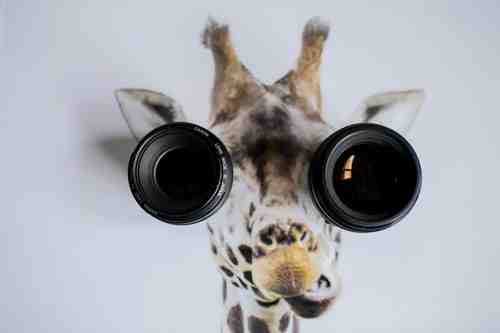
Basic Concepts in Photography
On March 19,2022 by Tom Routley
Whether you want to get into photography or you are struggling to understand all the features of your smartphone camera, we can all agree: photography can be confusing at first. Having an amazing idea for a photo isn’t enough and often, it doesn’t turn out like the image you had in your head. Part of this may be due to the execution and how you manage the light, what lenses you are using, and many more. But where to start? In this article, we discuss the basic concepts in photography, so if you are ready for your first photography lesson, then read on.
How Does a Camera Work?
If you’ve ever heard people talking about photography, then you’ve most probably heard them saying multiple times ’light’. But why is the lighting important and relevant? To answer this question, you should first understand how a camera works. An object reflects the light (sometimes, the light will pass through). A camera makes a picture out of it: it uses glass to redirect those light rays together on a digital camera sensor or on a piece of film. This results in a sharp image.
In photography, finding the balance and exposing the right amount of light to the camera sensor (or film) is key. We talk about exposure.
Basic Concepts
Focus
In order to make the light rays meet at the right spot, there is a lens’s focusing system. Its mission is to adjust the distance between the glass piece and the sensor (or the film for traditional cameras). If the light rays don’t meet correctly, the image will appear blurry, or out of focus. However, this can be intentionally the desired effect and you can find plenty of beautiful and blurry photos on the Internet and in magazines.
Sharpness
The more one image is in focus, the more details are captured: this is called the sharpness of a photo.
Shutter Speed
A shutter is a device that allows light to pass. So what is ‘shutter speed’? It means the the time the shutter is open and allows the light in. Generally, on a sunny day, little time is needed - this time will increase if it is cloudy, and even more during the night. The shutter speed is measured in seconds and fractions of a second.
For objects in motion, a fast shutter speed is needed. A slow one will result in motion blur.
ISO
What is ISO? ISO means the camera’s sensitivity to light. The higher the ISO, the brighter the image will, and this also works in the opposite direction: the lower the ISO, the darker the image. The lowest ISO is 100 and the highest depends on the manufacturer and the evolution of technology.
Keep in mind that high ISO may result in image noise.
Aperture and Depth of Field
Aperture corresponds to the hole that lets the light into the camera. This is measured by F- numbers or F- stops. Smaller F-numbers indicate a larger aperture hole - and a greater F-number indicates a smaller aperture hole.
So what is ‘depth of field’? In a photo, there are often different objects at different distances from the camera. The depth of field will define how many of these objects will be in focus. A wider aperture means a shallower depth of field.
Focal Length
The focal length is the distance between the optical center of the lens and the sensor. It is measured in millimeters and can impact the field of view or even depth of field.
Images: Unsplash - @jamesbold; @evablue; @ernie_ ; @arturaldyrkhanov
Article Recommendations
Latest articles
Popular Articles
Archives
- November 2024
- October 2024
- September 2024
- August 2024
- July 2024
- June 2024
- May 2024
- April 2024
- March 2024
- February 2024
- January 2024
- December 2023
- November 2023
- October 2023
- September 2023
- August 2023
- July 2023
- June 2023
- May 2023
- April 2023
- March 2023
- February 2023
- January 2023
- December 2022
- November 2022
- October 2022
- September 2022
- August 2022
- July 2022
- June 2022
- May 2022
- April 2022
- March 2022
- February 2022
- January 2022
- December 2021
- November 2021
- October 2021
- September 2021
- August 2021
- July 2021
- January 2021
Leave a Reply